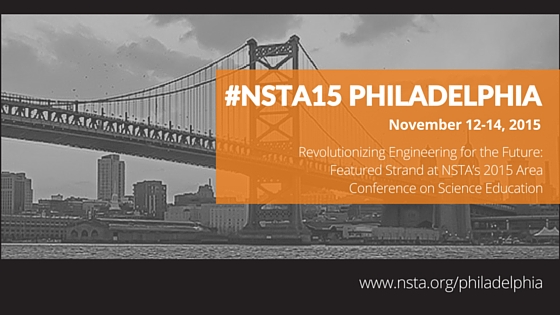The STEM in Volcanoes
By Becky Stewart
Posted on 2015-10-05
My parents are currently in Hawaii, visiting Maui, Oahu, and the big island, Hawaii itself. They’ve wanted to go for many years, and on the occasion of their 50th wedding anniversary they decided to do it. I had been to Oahu and the big island about 25 years ago to see my college roommate, who did her masters degree in planetary geology at the University of Hawaii Manoa. My parents trip got me thinking about volcanoes again, and I thought they’d make a good STEM topic.
At the time of my visit to Hawaii I was living in northern Virginia, and I remember thinking that I had gone almost as far away from home as I could get without a passport. Hawaii is close to 5000 miles from Washington, and that felt just about far enough for a week. The Hawaiian islands are beautiful and amazingly tropical—there are native plants there that people grow in greenhouses on the east coast of the United States. The volcanoes on Oahu are all extinct now. Diamond Head outside Honolulu has been extinct for about 150,000 years. One of the craters now forms Hanauma Bay, which is world famous for snorkeling. This crater formed about 40,000 years ago.
The island chain and a number of related islands and seamounts have all formed over an active hotspot in the middle of the Pacific Ocean, where magma is upwelling from deep in the Earth. As the Pacific plate moves over the hotspot (as a result of plate tectonics), new volcanoes form. There is currently a new seamount forming in the chain, called Loihi. The summit of the volcano is still almost 1000 meters below the surface of the ocean, while the base is 5000 meters below the surface. Recently scientists have discovered a new kind of bacteria that feeds on iron, at the base of the seamount. These bacteria may help to balance ocean chemistry. The hydrothermal vents at the top of the Loihi seamount also host a variety of life, all of which survives without benefit of light from the Sun. The base of the food chain here is chemosynthetic organisms, which produce energy from the superheated fluids that spew from the vents.
On my visit to Hawaii I determined that I wasn’t going all that way to not get inside a volcano, so I bought a ticket for an interisland flight to Hilo, rented a car (a red Mustang convertible—did I mention it was a fantastic trip?), and drove to the Hawaii Volcanoes National Park. Behind the visitor center you can walk or drive into the Kilauea caldera see several craters. The caldera covers several square miles, and the Halemaumau crater, where an eruption is currently occurring, is almost a mile across itself. The national park is not closed to the public, even though Kilauaea has been erupting continuously since 1983. This is because there is a high level of confidence that the Kilauea eruption will not become explosive.
There are several kinds of volcanic eruptions, and Hawaiian eruptions are generally less violent than other types. The lava in Hawaiian volcanoes is less viscous than other types, which allows gas to escape and release some of the pressure gradually. Other types of volcanoes trap gas in the lava, and pressure builds up until the volcano explodes. The geologic setting of the volcano affects the type of magma that forms to feed the volcano and eventually erupt as lava. The common simple system of volcano classification into three types—stratovolcanoes, shield volcanoes, and cinder cones—is currently up for debate, due to new evidence about whether mantle plumes exist or not.
The volcanoes on Hawaii are known as shield volcanoes, which have not been explosive volcanoes in the past. One very famous example of an explosive volcanic eruption is that of Krakatau in Indonesia in 1883. There is a very readable book about the eruption called Krakatoa: The Day the World Exploded, by Simon Winchester. Krakatoa is an alternate spelling for the name of the island.
Volcanic eruptions are slightly more predictable than earthquakes. Volcanoes are easier to study and understand because they are fixed in one place, while a fault zone may extend for hundreds or thousands of miles and contain numerous branches. The San Andreas Fault in California, U.S.A, is one of the longest in the world, stretching for almost 2,000 miles. Prediction of earthquakes is a game of probability, accomplished by a combination of historical research to identify large earthquakes in a fault’s past and monitoring the build up of strain on the fault. In 2011, six scientists were accused of manslaughter and tried for failing to predict the 2009 L’Aquila earthquake in Italy, which killed more than 300 people. They were initially convicted but another Italian court recently overturned the conviction, claiming that the original judges had failed to understand modern seismology.
The prediction of all sorts of natural hazards is an important field of engineering. The goal of natural hazard assessment and risk management is to prevent a hazard from becoming a disaster. The National Association of Engineers has published research on this issue and on how population growth affects planning for natural hazards. A useful engineering unit on natural disasters is available here. It is designed for Grades 3–5, but with a little creativity could be adapted for middle or high school use.
Produced by the National Science Teachers Association (NSTA), science writer Becky Stewart contributes monthly to the Science and STEM Classroom e-newsletter, a forum for ideas and resources that middle and high school teachers need to support science, technology, engineering, and math curricula. If you enjoy these blog posts, follow Becky Stewart on Tw
itter (@ramenbecky).
Follow NSTA
Revolutionizing Engineering for the Future: Featured Strand at NSTA’s 2015 Area Conference on Science Education in Philadelphia, Pennsylvania, November 12–14
By Lauren Jonas, NSTA Assistant Executive Director
Posted on 2015-10-05
This November, the National Science Teachers Association (NSTA) will feature a special strand “Revolutionizing Engineering for the Future” at our 2015 Area Conference on Science Education, in Philadelphia, November 12-14. Engineers recognize and define problems posed around human needs and wants. They design solutions that apply disciplinary core ideas (physical, life, Earth/environmental, space, engineering, and technology). Teachers who focus on engineering can help students develop skills in critical thinking, creativity, and science and engineering practices. Developing engineering practices builds on student learning through actual experience and incorporates Problem-Based Learning and/or Project Based Learning activities and connects students to the world around them. This strand give science teachers deep knowledge of the teaching and learning practices for the application of engineering (reflected in both the NGSS and/or state standards), as well as techniques and strategies to better infuse engineering concepts into the classroom.
 The featured presentation for this strand will be “Scientific Literacy and the Survival of Our Species,” on Thursday, November 12, at 2:00 PM at the Pennsylvania Convention Center, Ballroom B. Presenter Damon Bradley (NASA Goddard Space Flight Center: Greenbelt, MD) will share his own experiences growing up in the dangerous neighborhoods of South Philadelphia, and how, through learning discipline and hard work from his family, he became a research engineer at NASA. From these experiences, he will present some ideas for keeping students and adults engaged and helping to raise the overall scientific consciousness of American society…and why this is imperative for our own survival.
The featured presentation for this strand will be “Scientific Literacy and the Survival of Our Species,” on Thursday, November 12, at 2:00 PM at the Pennsylvania Convention Center, Ballroom B. Presenter Damon Bradley (NASA Goddard Space Flight Center: Greenbelt, MD) will share his own experiences growing up in the dangerous neighborhoods of South Philadelphia, and how, through learning discipline and hard work from his family, he became a research engineer at NASA. From these experiences, he will present some ideas for keeping students and adults engaged and helping to raise the overall scientific consciousness of American society…and why this is imperative for our own survival.
Below is a small sampling of other sessions on this topic:
- En-gene-eering: An Engineering Design Challenge for Genetics
- Your Own Space Program: Engineering a Complete Rocket Launch/Flight/Analysis System from First Principles to Apogee
- Building Green: Designing Sustainable Solutions
- Understanding Car Crashes: Engineering Truly Impactful STEM Lessons
- Nanotechnology in the K–12 Classroom
- Whoa! Is It Windy!? Engineering a Wind Detection Device
 Want more? Browse the program preview, or check out more sessions and other events with the Philadelpia Session Browser/Personal Scheduler. Follow all our conference tweets using #NSTA15, and if you tweet, please feel free to tag us @NSTA so we see it!
Want more? Browse the program preview, or check out more sessions and other events with the Philadelpia Session Browser/Personal Scheduler. Follow all our conference tweets using #NSTA15, and if you tweet, please feel free to tag us @NSTA so we see it!
The mission of NSTA is to promote excellence and innovation in science teaching and learning for all.
Future NSTA Conferences
2015 Area Conferences
2016 National Conference
2016 STEM Forum & Expo
Follow NSTA



